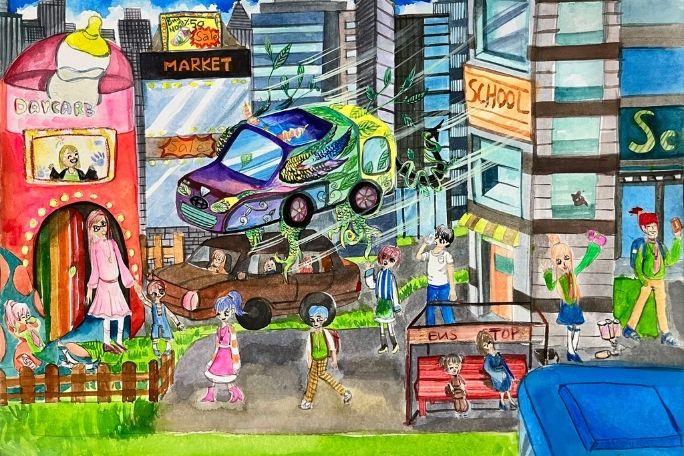Lesson summary
In this lesson, students design a dream car and create an artwork to represent their ideas that will be submitted to the Toyota Dream Car Art Contest. This contest encourages and inspires creative expression and imagination in students – some amazing ideas are born from dreams! Students will investigate some of the adaptations animals have to enable them to live in extreme environments. Students begin by thinking about how humans differ from animals in how they cope with extreme environments. They then investigate different types of adaptations, including physical and behavioural adaptations. Students will then work in groups to conduct research into the adaptations of one animal and report their findings to classmates. Finally, students will design and create a dream car that incorporates different animal adaptations.
Learning intentions:
Students will...
- understand what adaptations are
- understand how some of the adaptations animals have enable them to live in extreme environments
- Students recognise some of the adaptations animals have to enable them to live in extreme environments
- develop and practice art-making techniques
Success criteria:
Students can...
- explain the difference between behavioural and physical adaptations
- conduct research online
- work collaboratively
- plan and create artworks
- use different drawing/painting techniques
- engage in group and class discussions
Lesson guides and printables
Lesson details
Curriculum mapping
Australian curriculum content descriptions:
Year 5 Science:
- Living things have structural features and adaptations that help them to survive in their environment (ACSSU043)
Year 6 Science:
- The growth and survival of living things are affected by physical conditions of their environment (ACSSU094)
Years 5 & 6 Visual Arts:
- Explore ideas and practices used by artists, including practices of Aboriginal and Torres Strait Islander artists, to represent different views, beliefs and opinions (ACAVAM114)
- Develop and apply techniques and processes when making their artworks (ACAVAM115)
Syllabus outcomes: ST3-10LW, ST3-11LW, VAS3.1, VAS3.2.
General capabilities: Critical and creative thinking, Literacy.
Cross-curriculum priority: Sustainability OI.7, OI.8.
Relevant parts of Year 5 Science achievement standards: Students analyse how the form of living things enables them to function in their environments.
Relevant parts of Year 6 Science achievement standards: Students describe and predict the effect of environmental changes on individual living things.
Relevant parts of Year 5 and 6 Visual Arts achievement standards: Students use visual conventions and visual arts practices to express a personal view in their artworks. They demonstrate different techniques and processes in planning and making artworks.
Unit of work: Toyota Dream Car Contest.
Time required: 160+ mins.
Level of teacher scaffolding: Medium – facilitate class discussion, guide groups through activities and through the creation of artworks.
Resources required
- Paper measuring no larger than 400mm x 550 mm (15.7-21.7in.) or A3 in size
- Scrap paper for drafting
- Drawing materials, including but not limited to: coloured pencils, pens/markers, crayons, paints, watercolour paints, etc
- Student Worksheets – one copy per student
- Device capable of presenting a video to the class
- Behavioural Adaptations Factsheet – enough copies for half the class working in pairs
- Physical Adaptations Factsheet – enough copies for half the class working in pairs. Previous Contest Winners
Skills
This lesson is designed to build students’ competencies in the following skills:
- Communication
- Creativity
- Critical thinking
- Problem solving
Additional info
The Toyota Dream Car Art Contest usually commences late October to early November and concludes late to early March. Find up-to-date entry details, prizes and full terms and conditions here.


Welcome back!
Don't have an account yet?
Log in with:
By signing up to Cool.org you consent and agree to Cool's privacy policy to
store, manage and process your personal information. To read more, please see
our privacy policy here(Opens in new tab).
Create your free Cool.org account.
Many of our resources are free, with an option to upgrade to Cool+ for premium content.
Already have an account?
Sign up with:
By signing up to Cool.org you consent and agree to Cool's privacy policy to
store, manage and process your personal information. To read more, please see
our privacy policy here(Opens in new tab).